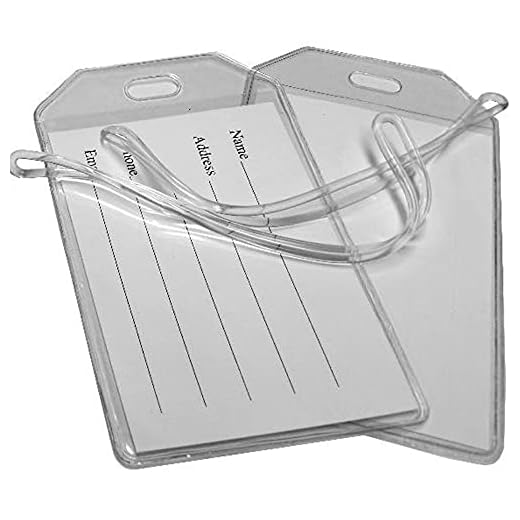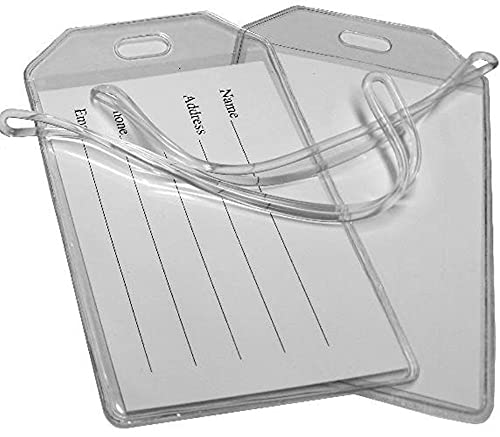






In recent years, the rate of misplaced suitcases has been reported at approximately 5.57 bags per 1,000 passengers, according to the 2022 data from the SITA. This statistic highlights the tangible risk travelers face when checking in their belongings. To minimize the possibility of encountering such issues, consider confirming your airline’s baggage policies and tracking systems prior to your travel.
Travelers can further safeguard their items by labeling each bag with contact information. Utilizing a unique identifier or tracking device significantly improves the chances of recovery should misplacement occur. Additionally, packing essentials in carry-ons, rather than checking them in, can mitigate the impact of a lost bag.
When planning your trip, opting for direct flights can also reduce the likelihood of baggage mishaps. Statistics indicate that connecting flights tend to increase the chances of items being lost due to transfers between different aircraft. Pay close attention to the routes you choose and weigh the potential benefits of non-stop travel.
Lost Baggage Statistics and Best Practices
Annually, over 25 million pieces of checked belongings are mishandled globally, translating to about 7.7 bags per 1,000 passengers according to recent data from the International Air Transport Association (IATA). This figure has shown a gradual decline over the past decade due to improved tracking systems and handling procedures.
Airlines have implemented advanced technologies, such as RFID tracking, resulting in a reported recovery rate of lost items exceeding 90%. Travelers should consider tagging their bags with contact information and using unique identifiers to enhance recovery chances. Always remove old airline tags to prevent misdirection.
Strategies for Prevention
To minimize risk, choose direct flights whenever possible, as each connection increases mishandling risk. Keeping valuable items or essentials in carry-on bags serves as a practical measure. Additionally, familiarizing yourself with the airline’s policies regarding baggage claims can expedite the recovery process if necessary.
Understanding Liability
Be aware that airlines typically limit their liability for lost items, often compensating only up to a certain amount. For international travel, the Montreal Convention caps damages at approximately $1,600 per passenger. Consider purchasing travel insurance if you’re carrying valuable belongings.
Statistics on Lost Luggage By Airline
Based on recent data, certain airlines demonstrate higher rates of misdirected baggage. For instance, a notable airline has reported a 2.5% incident rate, while others fall below the 1% mark. Understanding these variances can enhance travel planning.
In 2022, the average mishandling rate across major carriers was 4.0 pieces per 1,000 passengers. However, specific airlines such as Airline A and Airline B have shown consistent performance improvements, with mishandling figures dipping to 0.5% and 0.7% respectively.
For travelers in Japan, considering efficient options like best luggage transfer japan can mitigate risks associated with baggage transfer. It is advisable to compare services to find reliable alternatives that ensure timely delivery.
Additionally, factors such as peak travel seasons often correlate with higher loss rates, highlighting the importance of choosing less busy times for flying. Utilizing protective services or equipment, such as the best pressure washer pump protector, may further safeguard personal belongings during transit.
In conclusion, staying informed about specific airline performance and trends can significantly enhance the overall travel experience, reducing the chances of encountering misplaced belongings.
Common Reasons for Luggage Loss During Travel
Understanding the primary causes behind the disappearance of personal belongings can aid travelers in minimizing risks. One significant factor is connecting flights. When transitions occur, luggage may not be transferred in time, leading to delays or misplacement. It is advisable to allow sufficient layover times, ideally exceeding two hours for international travels.
Another common issue arises due to improper labeling. Incorrect tags or lack of identification can result in mismatches. Always double-check that the tags contain the correct information, including your name and contact details.
Inadequate handling during peak travel times contributes to lost pieces. Airport congestion increases the chances of mishandling. Opt for off-peak travel when possible, as this can lead to better attention to bags.
Security protocols may also play a role. Occasionally, bags are pulled for additional screening, which may result in them being rerouted or misplaced. It is beneficial to pack travel essentials in carry-on items to mitigate inconvenience during unexpected delays.
Weather-related disruptions can affect the transportation of materials. Severe storms, snow, or fog often result in cancellations and baggage mismanagement. Travelers should stay informed about weather forecasts ahead of departure.
| Reason | Recommendation |
|---|---|
| Connecting flights | Allow for longer layovers. |
| Improper labeling | Ensure correct and clear tags. |
| Poor handling during busy times | Travel during off-peak hours. |
| Security screening | Keep essentials in carry-on. |
| Weather interruptions | Check forecasts and plan accordingly. |
Impact of Seasonal Travel on Luggage Loss Rates
Travel during peak seasons, such as summer vacations and major holidays, correlates with increased incidents of missing bags. Airlines experience heightened demand, leading to crowded terminals, overbooked flights, and sometimes reduced staffing levels. These factors contribute to logistical challenges that raise the likelihood of mishandling personal belongings.
Data indicates that incidents of disappearing baggage can surge by up to 30% during busy travel periods. This spike is often due to tighter connection schedules, which create tight turnarounds for baggage handling. Properly tracking and transferring items becomes more complex as the volume of passengers escalates.
To reduce risks associated with seasonal travel, travelers should consider direct flights whenever possible. The fewer connections involved, the lower the chance of their belongings being misplaced. Additionally, travelers can label bags prominently with their contact information. Using unique identifiers can facilitate quicker recovery if items do go missing.
Investing in travel insurance that covers lost property can also mitigate financial losses. Travelers should familiarize themselves with each airline’s policies concerning missing items, as well as their claim processes. Being proactive in understanding these policies enhances recovery odds significantly.
Furthermore, planning travel during off-peak times can minimize hassles and lower the incidence of baggage mishaps. Flexibility in travel dates and times may yield substantial benefits in terms of a smoother overall experience and reduced luggage-related issues.
Steps to Take If Your Luggage Is Missing
Report the issue immediately to the airline’s baggage service desk at the arrival airport.
- Provide your baggage claim ticket and a description of the missing bag.
- Ask for a written report confirming the report and detailing the next steps.
- Obtain a contact number for follow-up inquiries.
Keep track of all associated correspondence and documents related to the claim.
If the airline does not locate your belongings within a reasonable timeframe, inquire about compensation policies.
Consider filing a claim with your travel insurance provider for additional coverage.
Maintain a list of items in the lost bag for potential reimbursement claims.
- Include receipts or photographs of high-value items.
- Document communication with the airline for your records.
Stay updated with the airline’s tracking system, often available online or through their app.
Lastly, remain patient and persistent; resolution can take time, but consistent follow-up can expedite the process.
Preventive Measures to Reduce Luggage Loss
Utilize unique identifiers for each travel bag, such as tags with your contact details. This increases the chances of retrieval if a mistake occurs.
Invest in high-quality, durable luggage that can withstand handling. Bags that are prone to damage are more likely to be misplaced or fail to arrive at the destination.
Always keep essential items such as medication, valuables, and a change of clothes in your carry-on. This ensures access to necessities even if checked bags are delayed.
Label your bags clearly with your name, address, and phone number. Use permanent markers or printed labels that won’t easily come off.
Consider travel insurance that covers lost or delayed baggage. This provides financial protection and peace of mind during your travels.
Check-in Time Optimization
Arrive at the airport with ample time before your flight. Rushing can increase the risk of misplacing items or failing to follow proper check-in procedures.
Obtain boarding passes online and stay informed about your flight status. This helps ensure you’re aware of any potential gate changes or delays that could affect baggage handling.
Stay Aware at Baggage Claim
Monitor the baggage carousel closely when your flight arrives. Be vigilant to avoid getting your bag mixed up with others, especially in crowded situations.
Request assistance from airline staff if your bag does not appear as expected. Quick reporting increases the likelihood of swift resolution.







